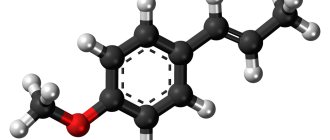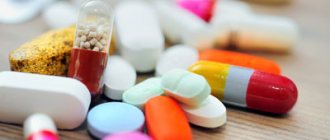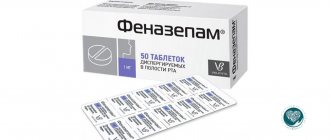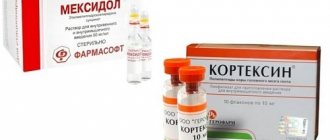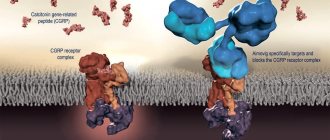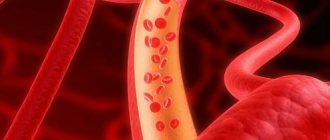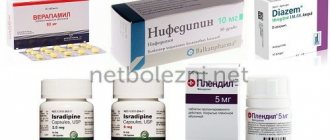Antiepileptic drugs are medications used for epilepsy to prevent or treat epileptic seizures. In addition, these drugs are used to prevent or treat seizures that occur due to other diseases. Therefore, they are also called anticonvulsants.
Epilepsy is a common chronic disease of the nervous system, which usually manifests itself as repeated seizures - convulsions. Epileptic seizures are generalized (spread to both hemispheres of the brain) and partial (occur in a strictly defined area of the brain).
The development of seizures is preceded by an aura - nausea, weakness, dizziness, speech impairment, numbness of the lips, tongue, loss of consciousness. Next, convulsions occur directly: tonic (the body and limbs are stretched in a state of tension, the jaws are clenched, and breathing is held) and clonic (contraction of the muscles of the limbs, neck, and torso).
Sometimes convulsions are manifested by individual muscle twitching without loss of consciousness (myoclonus), sudden short-term freezing, lack of reaction (absence).
Epilepsy usually occurs in childhood and most often the cause cannot be determined. Heredity, intrauterine oxygen deprivation of the fetus during pregnancy, and birth injuries play a certain role in the development of epilepsy.
Seizures can also be a symptom of other diseases or conditions that occur at any age. Thus, seizures can occur with head injuries, hemorrhage in the brain, intracranial tumors, pregnancy, oxygen starvation, metabolic disorders, overdose of substances that affect the nervous system (including alcohol).
Indications for use
All antiepileptic drugs are used to treat epilepsy, as well as symptomatic seizures in other diseases of the nervous system.
Certain drugs (carbamazepine, gabapentin, pregabalin) are also used to treat neuralgia and neurogenic pain (associated with nerve damage).
Lamotrigine, carbamazepine, oxcarbazepine, and valproic acid are additionally used to normalize mood in patients with bipolar affective disorder, which is characterized by alternating periods of manic agitation and depression.
Anticonvulsants
7. Anticonvulsants (anticonvulsants) and seizure therapy. Anticonvulsants (Latin convellere - shake, pound) are drugs that prevent the onset of epileptic seizures, stop them and are used in the treatment of epilepsy and epileptic syndromes of exogenous organic etiology. The mechanisms of action of anticonvulsants are associated with their ability to suppress the activity of the epileptic focus (a group of neurons that spontaneously and periodically enter a state of uncontrolled excitation), block the nerve impulses emanating from it and reduce the sensitivity of the nervous structures of the brain to impulses from the epileptic focus.
The main antiepileptic drugs currently include the following.
1) Carbamazepines . These are carbamazepine, finlepsin-forte, oxcarbazepine. For all simple and complex partial seizures, as well as for secondary generalized seizures, carbamazepines are the first choice drugs; they constitute from 16% (Japan) to 55% (Germany) of the volume of all prescribed anticonvulsants. It has also been established that they have a positive effect on the mental functions of patients with epilepsy. Therapeutic concentration in plasma is 3–12 mg/l. Therapeutic dose in children is up to 30 mg/kg body weight/day, in adults – up to 20 mg/kg body weight/day.
The main mechanisms of action of carbamazepine:
- blockade of voltage-dependent sodium channels and delay in the restoration of their activity;
- decreased calcium channel conductance;
- influence on synaptic transmission – partial blocking of the action of aspartate and glutamate;
- inhibition of the uptake of catecholamines in high concentrations;
- increased GABAergic inhibition.
The place of carbamazepine in the treatment of epilepsy and epileptic seizures:
- treatment of various types of epileptic paroxysms (primarily simple and complex partial, as well as secondarily generalized seizures). Treatment should begin with a small dose of 100 mg/day, and then gradually increase it to an effective dose (100 mg/day). It is highly advisable to use monitoring of drug levels in blood plasma. Therapeutic and toxic concentrations are 3 and 14 mg/l, respectively.
In the treatment of partial forms of epilepsy, prolonged or durable forms of carbamazepine are preferred. This allows you to avoid relapse of seizures towards the end of the interval between doses of the drug and prevent dose-dependent side effects that occur soon after taking it orally. In order to reduce the likelihood of side effects, it is recommended to distribute the daily dose into 2-3 doses.
It is recommended to avoid polytherapy, i.e. combination with phenobarbital derivatives and other drugs that cause induction of liver enzymes. The effectiveness of carbamazepine monotherapy for partial seizures is estimated at 60–85%;
- treatment of pregnant women (in a small dosage it has the least teratogenic effect among all anticonvulsants);
- prevention of pain attacks due to neuralgia of the trigeminal and glossopharyngeal nerves;
- normothymic effect (maintenance therapy of bipolar affective disorders to prevent attacks of affective disorder);
- antimanic effect (treatment of acute manic states);
- tranquilizing effect;
- elimination of mental and behavioral disorders accompanying epileptic seizures;
- anti-aggressive effect.
2) Valproates. These are acediprole, vigabatrin, valpromide, tiagabine. The high effectiveness of valproic acid and its salts in all types of seizures has turned them into the main antiepileptic drug. The proportion of patients taking valproate currently ranges from 16% (Germany) to 57% (Japan). The therapeutic concentration of valproate in plasma ranges from 30 to 120 mg/l. The therapeutic dose in children is 20–30 mg/kg body weight/day, in adults – 15–20 mg/kg body weight/day.
The main mechanisms of action of valproate:
- enhancing the activity of the inhibitory GABAergic system by influencing chloride channels;
- blockade of voltage-dependent membrane sodium channels;
- inhibition of T-calcium channel activity, resulting in the high activity of valproate (along with ethosuximide) in the treatment of absence seizures.
The place of valproate in the treatment of epilepsy and epileptic seizures:
- idiopathic generalized and partial epilepsy;
- primary generalized seizures (tonic-clonic, myoclonic);
- simple and complex partial seizures;
- polymorphic seizures;
- undifferentiated polymorphic seizures;
- combination of generalized and partial forms of epilepsy;
- symptomatic partial epilepsy (mainly in combination with other antiepileptic drugs);
- treatment of women who are breastfeeding (the content of valproate in breast milk does not exceed 3%, whereas for other anticonvulsants it is 40% or more of the dose taken).
In addition, valproate has:
- anxiolytic, thymoleptic, normothymic effect. They are used for the prevention of affective disorders in the framework of cyclothymia, bipolar affective psychosis, paroxysmal schizophrenia (in the treatment of mixed affective states), primarily angry mania, as well as with rapid changes in affective phases (depression and mania), a monopolar type of course with a predominance of depressive phases;
- antimigraine effect used to prevent severe migraine attacks with neurological symptoms.
3) Topiramate. Thanks to its unique properties, the drug has become widespread in 95 countries around the world. As monotherapy and in combination with other anticonvulsants, topiramate is used in the treatment of epilepsy in children from 2 years of age (topiramate practically does not interact with other anticonvulsants, excluding phenytoin, and is therefore well tolerated in combination therapy). Combination with carbamazepine, phenobarbital and phenotoin increases the elimination rate of topiramate by approximately 50%. Mechanisms of antiepileptic action of topiramate:
- blockade of voltage-dependent sodium channels;
- inhibition of high-threshold voltage-activated calcium channels;
- inhibition of kainate glutamate receptors;
- enhancing the activity of the inhibitory GABAergic system by acting on chloride channels, due to which topiramate has a psychotropic effect (mixed profile of psychotropic effects).
Experimental studies show that topiramate also has a cerebroprotective effect, which a priori should help slow down the rate of increase in epileptic personality changes and mnestic-intellectual deficits.
Place of topiramate in the treatment of epilepsy, migraine and mental disorders:
- partial seizures (simple, complex, secondary generalized);
- generalized tonic-clonic seizures;
- unspecified type of seizures in primary diagnosed epilepsy;
- myoclonic seizures;
- epilepsy in patients with liver diseases (at doses up to 200 mg/day, the drug is practically not metabolized in the liver);
- treatment of epilepsy in women using contraceptives;
- treatment of epilepsy in women predisposed to mastopathy, polycystic ovary syndrome and obesity;
- epilepsy with Lennox-Gastaut syndrome;
- prevention of migraine attacks.
Topiramate also has a mood stabilizer and, by preventing the development of both manic and depressive phases, compares favorably with other mood stabilizers.
For children over 2 years of age, in the first week of treatment, 0.5–1 mg/kg body weight is prescribed at night, after which the dose is increased by 0.5–1 mg/kg per day every 1–2 weeks. In most cases, effective doses in children are 3–6 mg/kg per day. Take the drug 2 times a day. The average therapeutic dose of the drug in adults is 200–400 mg/day, treatment begins with 50–100 mg/day.
4) Lamotrigine. Currently used as a drug of first choice in mono- and polytherapy of epilepsy. Lamotrigine has unique pharmacodynamic properties:
- suppresses epileptic discharges in a neuron by blocking voltage-dependent sodium channels, which is important in the treatment of focal epilepsies;
- blocks high-threshold, voltage-dependent sodium channels, which determines its effectiveness in the treatment of primary generalized epilepsies;
- blocks the presynaptic membrane of excitatory axon terminals, which leads to limitation of the pathological release of excitatory amino acids - glutamate and aspartate, which take part in epileptogenesis;
- Constant use of lamotrigine increases by 25% the amount of the inhibitory neurotransmitter GABA, one of the main factors in the suppression of epileptogenesis in the brain;
- Lamotrigine acts only on those neurons that exhibit epileptic activity and has no effect on other neurons. This explains the minimum of side effects during lamotrigine therapy;
- Lamotrigine, in addition to anticonvulsant activity, exhibits neuroprotective and thymoleptic properties.
The therapeutic concentration of lamotrigine in blood plasma is 1–3 mg/l, the level of the drug in plasma has a linear dependence on the dose, which allows it to be adjusted without the need to monitor plasma levels.
The place of lamotrigine in the treatment of epilepsy and affective disorders:
- simple and complex partial seizures;
- primary and secondary generalized tonic-clonic seizures;
- absence seizures;
- atonic seizures;
- Lennox-Gastaut syndrome;
- melancholic depression (lamotrigine is an antidepressant with an activating effect);
- bipolar affective disorder, in which lamotrigine is used as a mood stabilizer;
- prevention of affective, primarily depressive phases.
For children aged 2 to 12 years, the drug is prescribed starting at 0.2 mg/kg once a day for 2 weeks, then at 0.5 mg/kg once a day for 2 weeks, then an effective therapeutic regimen is selected. dose. The average maintenance dose is 1–5 mg/kg/day in 1–2 doses.
For children over 12 years of age and adults, monotherapy begins with a dose of 0.025 g (25 mg) once a day for 2 weeks, then the dose is increased to 0.05 g (50 mg) once a day for the next 2 weeks, then gradually increased dose by 0.05–0.1 g (50–100 mg) every 1–2 weeks until a therapeutic effect is obtained. The average maintenance dose is 0.2 g (200 mg) per day in 2 divided doses (in some cases it is up to 0.5 g, or 500 mg/day). The combination of lamotrigine and valproate often achieves the maximum effect of therapy.
5) Phenytoin. One of the most common, effective and inexpensive anticonvulsants. The mechanism of its action is associated with the influence on voltage-dependent sodium channels, as well as with the inhibition of calcium channels. Therapeutic concentration in plasma is 5–20 mg/l. The therapeutic dose in children is 7 mg/kg body weight/day, in adults – 5 mg/kg body weight/day.
The place of finytoin in the treatment of epilepsy:
- simple partial seizures;
- psychomotor seizures;
- generalized tonic-clonic seizures.
6) Clonazepam. The mechanism of anticonvulsant action is explained by the effect on benzodiazepine receptors (3H-diazepam receptors), located in the GABAergic neurotransmitter system, present in various structures of the brain, due to which benzodiazepines stimulate physiological mechanisms of suppression of the activity of most neurons. The therapeutic concentration of clonazepam in plasma is 0.025–0.075 mg/l. Therapeutic dose for oral administration is 0.015 mg/kg body weight/day.
The place of clonazepam in the treatment of epilepsy and affective disorders:
- all forms of status epilepticus (IV and rectal);
- simple and psychomotor partial seizures;
- generalized epilepsy with myoclonic-astatic seizures;
- myoclonic seizures;
- atonic seizures;
- absence seizures, typical and atypical;
- dysphoria, as well as psychopathic and neurosis-like states (explosiveness, irritability);
- vegetative-visceral seizures (drug of choice);
- anxiety-phobic conditions, including panic attacks;
- anxiolytic, muscle relaxant and hypnotic effects.
7) Ethosuximide. The mechanism of action is associated with the influence on voltage-dependent calcium channels (T-channels) and inhibition of excitatory transmitters in the thalamus. Therapeutic concentration in plasma is 40–100 mg/l. Therapeutic dose in adults is 20 mg/kg body weight/day, maintenance dose is 1–1.5–2 g/day (in 2–4 doses). Children under 6 years of age are prescribed 15–20 mg/kg/day, but not more than 0.25 g/day, children over 6 years of age – starting from 0.25 mg/day, maintenance dose – 15–30 mg/kg/day . Full effect is usually achieved in 4–8 weeks.
Place of the drug in the treatment of epilepsy:
- simple absence seizures;
- myoclonic-astatic, myoclonic seizures;
- epileptic encephalopathy.
 Phenobarbital. The mechanism of action is associated with the effect on voltage-dependent sodium channels and GABA receptors. Therapeutic concentration in plasma is 5–20 mg/l. The therapeutic dose in children is 7 mg/kg body weight/day, in adults – 5 mg/kg body weight/day.
Phenobarbital. The mechanism of action is associated with the effect on voltage-dependent sodium channels and GABA receptors. Therapeutic concentration in plasma is 5–20 mg/l. The therapeutic dose in children is 7 mg/kg body weight/day, in adults – 5 mg/kg body weight/day.
Place of the drug in the treatment of epilepsy:
- focal and secondary generalized tonic-clonic seizures;
- treatment of status epilepticus (iv administration).
9) Levetiracetam. Refers to highly selective anticonvulsants. To date, the following mechanisms of anticonvulsant action of the drug are known:
- regulation of neurotransmitter release from synaptic vesicles through interaction with the active glycoprotein of synaptic vesicles;
- enhancing GABAergic and glycinergic inhibition by blocking the effect of zinc and carbolines, restoring the influx of chlorides through GABA and glycine receptors and stabilizing the neuronal membrane;
- blocking epileptic discharges caused by bicuculline;
- inhibition of high-voltage calcium channels;
- suppression of paroxysmal depolarization shifts and epileptic spike discharges of hippocampal neurons;
- blocking kindling epileptogenic gene expression;
- neuroprotection against the excitotoxic effect of NMDA receptor activation.
Therapeutic dose in children is 10–30 mg/kg body weight/day, in adults – 10–40 mg/kg body weight/day.
Place of the drug in the treatment of epilepsy, affective and other disorders:
- treatment of epileptic seizures (simple and complex partial seizures, secondary generalized tonic-clonic seizures);
- prevention of pain attacks due to trigeminal neuralgia;
- normothimic effect (maintenance therapy for bipolar affective disorders);
- treatment of acute manic states;
- tranquilizing effect;
- therapy of pathological aggressiveness;
- behavioral disorders accompanying epileptic seizures.
10) Pregabalin. The mechanism of anticonvulsant action of the drug:
- increasing the level of GABA in the brain through activation of GABA beta receptors (pregabalin freely penetrates the blood-brain barrier);
- effect on voltage-dependent calcium channels and a decrease in calcium influx into the presynaptic endings of overexcited neurons;
- decreased release of excitatory neurotransmitters;
- modulation of the activity of hyperexcitable neurons that form the basis of the epileptic focus.
The place of pregabalin in the treatment of epilepsy and other pathologies:
- partial epileptic seizures as part of combination therapy in adults;
- neuropathic pain (diabetic peripheral neuropathies, postherpetic neuralgia);
- generalized anxiety disorder and social phobias in adults.
11) Lacosamide. The mechanisms of the anticonvulsant action of the drug have not been established, but it is known that the drug helps to attenuate the activity of the epileptic focus. Lacosamide is used as adjunctive therapy in the treatment of partial and secondary generalized seizures in patients with focal epilepsy aged 16 years and older. Therapeutic dose: starting with 50 mg 2 times a day, then gradually increased by 100 mg. The maximum dose is 400 mg/day.
Return to Contents
pharmachologic effect
Convulsions occur when the balance between excitation and inhibition in the brain is disturbed in the direction of excitation. Mediators (signal transmitters between neurons) are responsible for this balance:
- inhibitory – gamma-aminobutyric acid (GABA), glycine;
- stimulating – amino acids glutamate, aspartate.
In addition, sodium and calcium channels of neurons play a huge role in the generalization (spread) of excitation. Antiepileptic drugs affect one or more mechanisms maintaining the balance of excitation and inhibition in the brain.
Classification of antiepileptic drugs
There are several classifications of antiepileptic drugs: according to the characteristics of use in different forms of epilepsy - types of paroxysms, according to the mechanism of action, as well as the chemical structure of the drugs.
According to the mechanism of action, the following groups of antiepileptic drugs are distinguished:
Sodium channel blockers
- Hydantoin derivatives (phenytoin)
- Carboxamide derivatives (carbamazepine, oxcarbazepine, eslicarbazepine acetate)
- Others (lamotrigine, lacosamide)
Calcium channel blockers
- Succinimide derivatives (ethosuximide)
- Others (pregabalin)
Agents that enhance the inhibitory effects of GABA
- Barbiturates (phenobarbital, benzobarbital)
- Benzodiazepines (diazepam, clonazepam, lorazepam)
- Others (vigabatrin, gabapentin, tiagabine)
Agents that inhibit the action of excitatory amino acids
- Felbamate
Combination agents
- Fatty acid derivatives (valproic acid and its salts - valproates)
- Others (topiramate)
According to the characteristics of their use in different forms of epilepsy, antiepileptic drugs are divided into:
- Drugs used for partial seizures: valproate, carbamazepine, lamotrigine, vigabatrin, gabapentin, phenobarbital, clonazepam, phenytoin.
- Drugs used for generalized seizures:
- for grand mal seizures - valproate, carbamazepine, phenobarbital, phenytoin, lamotrigine;
- for small convulsive seizures (absences) - ethosuximide, valproate.
In addition to the drugs listed in the classification, seizures can be eliminated or prevented by magnesium preparations (magnesium sulfate) when administered intravenously, anesthetics (sodium hydroxybutyrate, sodium thiopental).
Approaches to taking anticonvulsants
If previously the main goal of treating epilepsy and taking anticonvulsants was to prevent new seizures, today an integrated approach takes first place, taking into account the patient’s quality of life and maintaining his ability to work during treatment
Finding effective therapy can be difficult. This is influenced by factors such as compliance with medication regimen and side effects. Changing drugs by trade name, but with the same active ingredient, can also lead to worsening problems.
Typically, one drug is used at the beginning of treatment for epilepsy, but the dosage and medication may vary. If the desired result is not achieved, only then connect a second remedy and use various combinations.
Finding effective therapy can sometimes be difficult.
Anticonvulsants
There are 3 main mechanisms used to treat epilepsy:
- Stabilization of the membrane potential of nerve cells due to the influence on ion channels. Due to this, K+ ions remain in the cell, and Na+ ions outside. The effect can also be exerted through Ca2+ channels. This maintains “rest” on the membrane of nerve cells.
- Suppression of processes involved in excitation.
- Strengthening braking mechanisms.
Many drugs act on several mechanisms at once and it will not be possible to divide them into groups on this basis.
Medicines:
Depakine Chronosphere , Convulex , Encorat chrono . Valproic acid preparations. They have a muscle relaxant effect and enhance inhibitory processes in the brain. Absorption of the drug may slow down when taken with food. Side effects include : weight gain, hair loss, gastrointestinal problems, tremors.
Finlepsin retard , Tegretol CR , Carbatol. They belong to carbamazepine drugs and are used for grand mal seizures and mixed forms of epilepsy. Contraindications: absence and myoclonic seizures. Side effects: dizziness, drowsiness, headache, but stopping treatment often causes a skin rash.
Phenobarbital , Benzonal , Maysolin . They belong to the group of barbiturates. Can be used for any type of epilepsy attack. Often used in infants. There is a marked slowdown in mental processes. Children have the opposite reaction and develop hyperreactivity. They reduce motor activity and can cause drowsiness. The anticonvulsant effect is realized by preventing the occurrence and propagation of an impulse from the source of activity. The absence form of idiopathic epilepsy will be a contraindication for use.
Frisium , Relanium , Merlit. They belong to the group of benzodiazepines. They are especially often used for progressive myoclonic epilepsy. But over time, the effect may decrease and addiction may develop .
Lamictal , Pamolen. The active ingredient is lamotrigine. It is effective for all types of seizures, but it is recommended to avoid it for myoclonus. The main side effect is a rash, the severity of which increases sharply when combined with valproate and carbamazepine.
Topamax (topiramate). Acts on different mechanisms in preventing attacks, effective in adults and children. Start taking with minimal doses and increase slowly. Use with caution in children with speech disorders, as well as sleep problems. One of the side effects is weight loss, so it should not be used in “thin” patients.
Keppra , Levetinol . The active ingredient is levetiracetam. Optimal action for epileptic myoclonus, does not interact with other drugs. Should not be used in patients prone to agitation and sleep disturbances.
Suxilep. Previously it was the drug of choice for the treatment of absence seizures, but has now given way to valproic acid. Contraindicated for mental problems. Side effects: headache, drowsiness, gastrointestinal symptoms.
Tebantin , Neurontin , Gabapentin . Structurally similar to GABA, they are not transformed in the liver, so they can be used with many other drugs and for liver diseases. Side effects: weakness, dizziness, weight gain.
Since the treatment of epilepsy in many cases involves lifelong use of drugs, the balance between their effectiveness and toxicity is important. Drug metabolism pathways (in the liver) and interactions with other drugs in concomitant diseases also play a role. The selection of anticonvulsant drug therapy is a joint effort between the doctor and the patient.
Epilepsy Treatment Basics
Antiepileptic drugs are prescribed only by a specialized specialist - a neurologist or psychiatrist - after a complete neurological examination of the patient. In this case, the type of epileptic seizures must be taken into account.
Antiepileptic drugs are usually prescribed after the second attack. The earlier treatment begins, the better and easier it is to control seizures.
Therapy is usually started with one drug (monotherapy). The effectiveness of treatment is assessed over 3 months. Ideally, the drug completely prevents seizures. In case of ineffectiveness, the drug is changed or a combination of two (less often three) drugs is used.
Epilepsy
Epileptic seizures that occur without any apparent reason two or more times can be considered epilepsy. An epileptic seizure is an abnormal or excessive discharge of neurons in the brain with visible manifestations. Visible manifestations are not always convulsions and loss of consciousness, they can be:
- only changes in consciousness;
- mental manifestations;
- motor changes;
- vegetative manifestations.
For a particular person, these symptoms can be in the form of ringing in the ears, flashes of light or flame, redness of the face, short-term disturbances in speech, memory and many others. It depends on where the nerve impulse went out of control and activated a particular area of the brain. Moreover, these changes may be first noticed by another person, and not by the patient himself. This can happen, for example, with episodes of freezing for a few seconds. If these symptoms have a clear cause, such as a head injury or a brain tumor, it is not epilepsy.
There are many forms of epilepsy depending on the type of epileptic seizures, types of epilepsy and status epilepticus (an epileptic seizure lasting more than 30 minutes at once or a series of seizures without full recovery of consciousness).
If the symptoms have a clear cause, then it is not epilepsy.
Features of epilepsy treatment
Epilepsy is a chronic disease that requires long-term, often lifelong, treatment. If epilepsy is not treated, the patient experiences behavioral disturbances, emotional disorders, and memory loss (epileptic dementia).
During treatment, patients are recommended to adhere to a normal sleep and rest schedule, a special diet high in fat and low in proteins and carbohydrates (ketogenic diet), and exclude alcohol, coffee, energy drinks and tobacco products from the diet.
